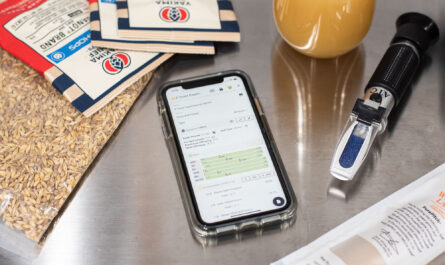As the “dude who brews beer” in my circle of friends and family, I’m often asked what actually makes an IPA a double IPA (also known as an Imperial IPA). This answer has gotten more complicated in the past several years. With the emergence of hazy New England-style IPAs, the double IPA definition gets a little murky—no pun intended. Since the NEIPA has become so popular, it’s actually carved out its own technical style according to the Brewer’s Association.
What Is a Double IPA?
The Brewer’s Association defines a double IPA as an IPA with an ABV (alcohol by volume) between 7.6%-10.6%. This is true for both hazy, American, and west coast style double or Imperial IPAs. There are of course several other technical defining characteristics, but ABV is consistent across the board. Generally speaking, an IPA under 7.5% ABV would be considered an India pale ale, although there are no hard and fast rules.
Without getting overly technical, a double IPA is mainly driven by ABV and international bittering units (IBUs). Double IPAs are typically brewed with more malted grains and more hops, boosting the alcohol content, malt backbone, and overall bitterness. When you crack open a double IPA, you expect a heavier style of beer along with more intense bitterness and aroma. These beers are typically hopped in greater quantities because the increased malt character allows for it—creating balance.
A double New England IPA on the other hand has the same defined ABV range as a classic double IPA but has a unique bitterness scale. Because these beers are hopped very differently throughout the brewing process, the perceived/actual bitterness in a NEIPA is usually much less than a classic IPA, even though they could be brewed with the same quantity of hops.
Double Dry Hopping
It gets even more confusing. Double Dry Hopping or DDH is another popular acronym printed on NEIPA beer labels. Since dry hopping does not effectively impart bitterness, it’s not technically exclusive to double IPAs. HOWEVER, a double IPA is more likely to be double dry-hopped because it generally suits the style much better. A double dry-hopped session or single IPA could feel unbalanced and taste overly bitter or astringent because of the lack of balancing malt character.
Rules Are Made to Be Broken
I would say beer guidelines serve as a way for breweries and consumers to have a basic understanding of what to expect from a beer. It’s ultimately up to the brewery to determine a beer’s classification. In fact, as I’m writing, I’m sipping on a 10% Triple NEIPA by Vitamin Sea. While this is technically a double IPA by the BA’s standards, it’s a high ABV beer that’s heavily hopped but drinks ultra-smooth. Who’s to honestly argue with them if it delivers?





I am now drinking a Double New England IPA, Double Heart, delicious.